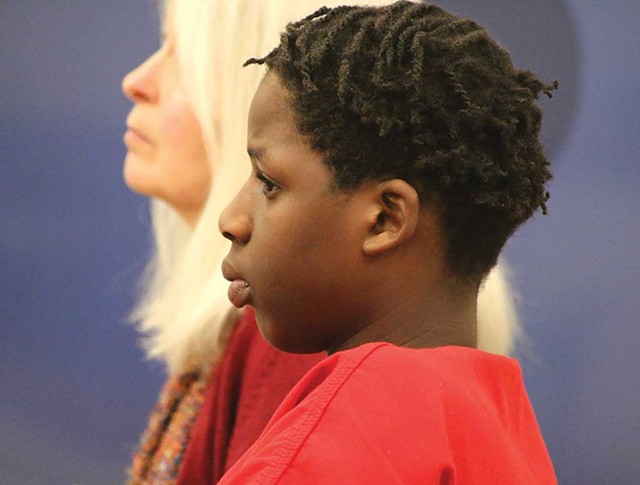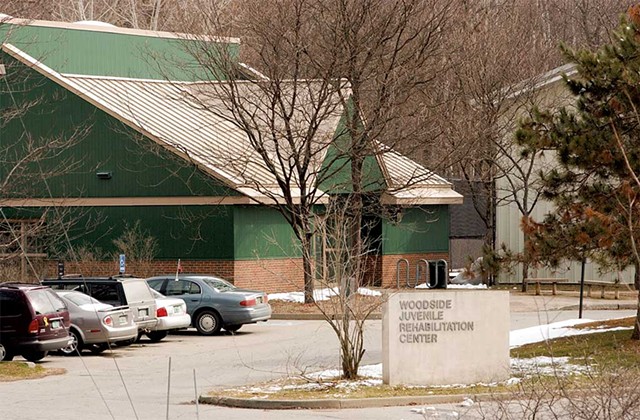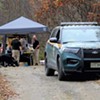Switch to the mobile version of this page.
Vermont's Independent Voice
- News
- Arts+Culture
- Home+Design
- Food
- Cannabis
- Music
- On Screen
- Events
- Jobs
- Obituaries
- Classifieds
- Personals
Browse News
Departments
-
Education

Scott Official Pushes Back on Former State…
-
News

Burlington Budget Deficit Balloons to $13.1 Million
-
Education

Senate Committee Votes 3-2 to Recommend Saunders…
- Court Rejects Roxbury's Request to Block School Budget Vote Education 0
- Norwich University Names New President Education 0
- Media Note: Mitch Wertlieb Named Host of 'Vermont This Week' Health Care 0
Browse Arts + Culture
View All
local resources
Browse Food + Drink
View All
Browse Cannabis
View All
-
Culture

'Cannasations' Podcaster Kris Brown Aims to 'Humanize'…
-
True 802

A Burlington Cannabis Shop Plans to Host…
-
Business

Judge Tosses Burlington Cannabiz Owner's Lawsuit
-
Health + Fitness

Vermont's Cannabis Nurse Hotline Answers Health Questions…
-
Business

Waterbury Couple Buy Rare Vermont Cannabis License
Browse Music
View All
Browse On Screen
Browse Events
Browse Classifieds
Browse Personals
-

If you're looking for "I Spys," dating or LTRs, this is your scene.
View Profiles
Special Reports
Pubs+More
A 14-Year-Old’s Murder Arrest Draws Attention to Vermont’s Lack of a Juvenile Facility
Published November 8, 2023 at 10:00 a.m.
Murder suspects should be locked up while they await trial, Addison County's top prosecutor told a judge last week — even if the alleged killer is 14 years old.
The next morning, however, State's Attorney Eva Vekos had a "change of heart." She no longer objected to allowing Hussein Mohamed to live at his family's Burlington home while his case plays out. The teen is accused of fatally shooting Madden Gouveia, 14, in Bristol while the boys were passing around a stolen handgun on October 30.
Spurring the about-face was a state prison official, Joshua Rutherford, who described, in courtroom testimony, the grim mechanics of detaining a 14-year-old boy in Vermont, where such scenarios are extraordinarily rare. Mohamed would either live with adult inmates, Rutherford explained, or be held in conditions akin to solitary confinement. That's because the state closed its lone secure facility for minors, Woodside Juvenile Rehabilitation Center, in 2020 following claims of child abuse. Without a replacement, the only option is state prison, where federal law prohibits minors from having contact with adults unless a judge deems it "in the interest of justice."
In Mohamed's case, he'd already spent two nights locked up in an adult prison in Rutland, according to his public defender.
The high-profile murder case involving a boy of 14 has offered the public a glimpse into a juvenile system for troubled or violent youths that, practically speaking, does not exist. In an investigation published last month, Seven Days detailed how concerns about violent restraints and isolation led to the shuttering of Woodside three years ago. Without a replacement, state workers have been used in some instances as glorified babysitters for teens with nowhere else to go.
Related The Loss of Grace: In Vermont’s juvenile lockup, a girl endured violence and isolation. She wasn’t the only one. And it was no secret.

The Loss of Grace
In Vermont’s juvenile lockup, a girl endured violence and isolation. She wasn’t the only one. And it was no secret.
In Vermont’s only juvenile lockup, the Woodside Juvenile Rehabilitation Center, a troubled girl was held in isolation and subjected to violent restraints — even as advocates pressed for reforms at the facility. The full story of what she endured inside Woodside, which was run by the Department for Children and Families before it was shuttered, has never been told — until now.
By Joe Sexton
Investigation
The case also points to a lingering contradiction between how Vermont treats serious crimes committed by juveniles and a contemporary understanding, made more urgent by Woodside's horrors, that kids should be treated according to their age.
"There are two tectonic plates out there. This is the fault line," longtime Vermont defense attorney David Sleigh said in an interview.
Vekos' decision to charge the young Black teen as an adult — rather than in juvenile court — drew criticism from the Rutland Area Branch of the NAACP and others because of the defendant's age and race and because the police affidavit offered no evidence that Mohamed meant to hurt Gouveia. Other witnesses, all teenagers, told investigators that they'd been passing around a stolen 9mm Smith & Wesson pistol while in a car when one teen put a bullet in the magazine and Mohamed fired it.
"I didn't mean to shoot you," the 18-year-old driver told police he heard Mohamed say to Gouveia, who died hours later.
Yet Vekos had few options. If a defendant is at least 14 years old and accused of any one of a dozen types of violent crime, state law requires prosecutors to proceed in criminal court. Mohamed has been charged with three of them: murder, manslaughter and aggravated assault.
Unlike family court, where juvenile proceedings take place behind closed doors, criminal court cases are open to the public. The parties can petition to move cases such as Mohamed's to family court, where later proceedings, including the outcome, would be private and focused on rehabilitation.
Vekos, speaking to reporters last week, said she hadn't decided whether the case against Mohamed was suitable for transfer to family court.
Lesser crimes, such as reckless endangerment, are misdemeanors and have been scrutinized as inadequate to address gun violence. Amid a spate of shootings in Burlington, Mayor Miro Weinberger lobbied lawmakers earlier this year to create a felony version of reckless endangerment when a firearm is involved. The measure has not been passed.
Vermont's existing law stems from a 1981 rape and murder case in Essex Junction. One of the suspects could not be tried as an adult because he was 15 years old, leading to legislative intervention — and, eventually, the creation of Woodside. While Vermont has made reforms in recent years to push more cases into juvenile court, rules for the most serious offenses remain excepted.
Mohamed's attorney, chief juvenile defender Marshall Pahl, said the state should reexamine the so-called "Big 12" offenses. He's not sure it makes sense to require that certain charges start in criminal court. He also questions whether the age when the statute applies, 14, is appropriate in light of modern understandings of brain development.
Homicide cases can be a tough sell for a restorative justice approach, noted Jessica Brown, director of the Center for Justice Reform at Vermont Law & Graduate School. But the facts in the Bristol case suggest it's worth seriously considering, she said.
"These were two 14-year-olds," she said.
Despite charging Mohamed with adult crimes, Vekos lamented the lack of any secure, age-appropriate facility where he could be held, leading to his release on strict conditions. When Woodside was open, the Department of Corrections would frequently send juveniles in Mohamed's position there through an arrangement with the Department for Children and Families. Without Woodside, six juveniles younger than 18 have spent time in state prisons during the past year. Only one of those youths was white, according to Department of Corrections data.
The state, Vekos said, has been "on notice" about the problem caused by Woodside's closure for years.
"This case has brought to light one of the most serious failings that our state has made when it comes to juveniles, crime and how to deal with it," she told a group of reporters outside the courtroom last week.
Prosecutors, DCF employees and even defense attorneys have grown exceptionally frustrated with the state of affairs. Teens are being held in conference rooms, sent out of state for treatment or detained in adult prisons. It's pushing family services workers to the brink.
Just days before the shooting in Bristol, a committee of lawmakers took hours of testimony from exasperated and incensed officials. Vermont State Employees' Association executive director Steve Howard called upon Gov. Phil Scott's administration to mobilize the Vermont National Guard to set up an emergency youth facility.
"Our members are desperate," the union chief said. "They describe this current situation as a ball of fire in the midst of a state of emergency."
Pahl criticized Howard's call to enlist the National Guard as a "profoundly unserious response to a profoundly serious problem."
"The problems posed by young people with mental health crises do not require military response," he said in an interview.
Pahl nonetheless agreed with testimony from state workers who said makeshift arrangements are putting them and the children they serve in unsafe situations. Matthew Bernstein, the state's child, youth and family advocate, told lawmakers that he observed one child who had been held under 24-7 supervision by DCF workers for roughly two weeks. The child was receiving no education, had no contact with peers "and was watching TV, it seemed, all day."
"It's really treating kids as objects," Bernstein testified. "That makes kids worse. That makes this problem worse."
The state has no secure facilities for youths with dangerous behaviors, and it has access to only 100 usable beds for kids who need other kinds of residential services, down from nearly 200 before the pandemic, DCF officials testified. Forty four children are currently receiving residential treatment out of state.
The lack of secure placements comes during an uptick in crimes involving kids. In 2022, 201 youths ages 10 to 19 were accused of crimes, up from 162 in 2017, according to Capt. Shawn Loan, who tracks statistics for the Vermont State Police. Young teens are using firearms more frequently, and some are ensnared in out-of-state drug trafficking networks.
Efforts to replace Woodside have run up against community opposition. A proposal for a secure residential treatment center in Newbury has been stymied by neighbors and is currently awaiting a ruling from the Vermont Supreme Court. DCF also proposed a small, temporary secure facility in St. Albans earlier this year, but that, too, received an icy reception from locals.
Other plans for a range of residential options are in various stages of development. They include a psychiatric residence at the nonprofit Brattleboro Retreat and a residential program at the Windham County Sheriff's Office.
Officials' latest idea is to renovate a state facility in Middlesex into a four-bed, temporary secure site. The project will be completed by March, state leaders testified, and will serve kids with the most urgent needs.
"It's not enough, but it's coming soon," DCF Commissioner Chris Winters told lawmakers. Officials hope to open a permanent facility by 2026.
But DCF has yet to find a partner to run the temporary program. If it can't, beleaguered state employees will work at the Middlesex facility themselves.
Even that "worst-case scenario," Winters said, is better than the current patchwork of emergency departments, police station conference rooms and sheriff's offices.
"We're putting kids in some inappropriate, untenable situations," Winters said.
Correction, November 9, 2023: Due to inaccurate information provided by a DCF official, an earlier version of this story reported the incorrect number of youths currently placed in programs outside of Vermont.The original print version of this article was headlined "No Room in the System | A 14-year-old's murder arrest draws attention to Vermont's lack of a juvenile facility"
Related Stories
Got something to say?
Send a letter to the editor
and we'll publish your feedback in print!
More By This Author
About The Author

Derek Brouwer
Bio:
Derek Brouwer is a news reporter at Seven Days, focusing on law enforcement and courts. He previously worked at the Missoula Independent, a Montana alt-weekly.
Derek Brouwer is a news reporter at Seven Days, focusing on law enforcement and courts. He previously worked at the Missoula Independent, a Montana alt-weekly.
Speaking of...
-

Vermont Supreme Court Suspends Vekos' Law License for Impeding State Probe
Mar 27, 2024 -

Still Facing DUI Charge, Vekos Returns to Work As Addison County Prosecutor
Mar 4, 2024 -

Addison County Prosecutor Facing DUI Charge Takes Paid Medical Leave
Feb 14, 2024 -

Addison County State's Attorney Vekos Pleads Not Guilty to Driving Under Influence
Feb 12, 2024 -

Addison Prosecutor Cited for DUI Last Week Is Back at Work
Jan 29, 2024 - More »
Comments
Comments are closed.
From 2014-2020, Seven Days allowed readers to comment on all stories posted on our website. While we've appreciated the suggestions and insights, right now Seven Days is prioritizing our core mission — producing high-quality, responsible local journalism — over moderating online debates between readers.
To criticize, correct or praise our reporting, please send us a letter to the editor or send us a tip. We’ll check it out and report the results.
Online comments may return when we have better tech tools for managing them. Thanks for reading.
- 1. A Former MMA Fighter Runs a Wildlife Rehabilitation Center in Cabot News
- 2. Scott Official Pushes Back on Former State Board of Ed Chair's Testimony Education
- 3. Home Is Where the Target Is: Suburban SoBu Builds a Downtown Neighborhood Real Estate
- 4. Burlington Budget Deficit Balloons to $13.1 Million News
- 5. Vermont Rep. Emilie Kornheiser Sees Raising Revenue as Part of Her Mission Politics
- 6. Legislature Advances Measures to Improve Vermont’s Response to Animal Cruelty Politics
- 7. Dog Hiking Challenge Pushes Humans to Explore Vermont With Their Pups True 802
- 1. Totally Transfixed: A Rare Eclipse on a Bluebird Day Dazzled Crowds in Northern Vermont 2024 Solar Eclipse
- 2. Zoie Saunders, Gov. Scott’s Pick for Education Secretary, Faces Questions About Her Qualifications Education
- 3. Don't Trash Those Solar Eclipse Glasses! Groups Collect Them to Be Reused 2024 Solar Eclipse
- 4. State Will Build Secure Juvenile Treatment Center in Vergennes News
- 5. Vermont Awarded $62 Million in Federal Solar Incentives News
- 6. Queen of the City: Mulvaney-Stanak Sworn In as Burlington Mayor News
- 7. New Jersey Earthquake Is Felt in Vermont News
















































